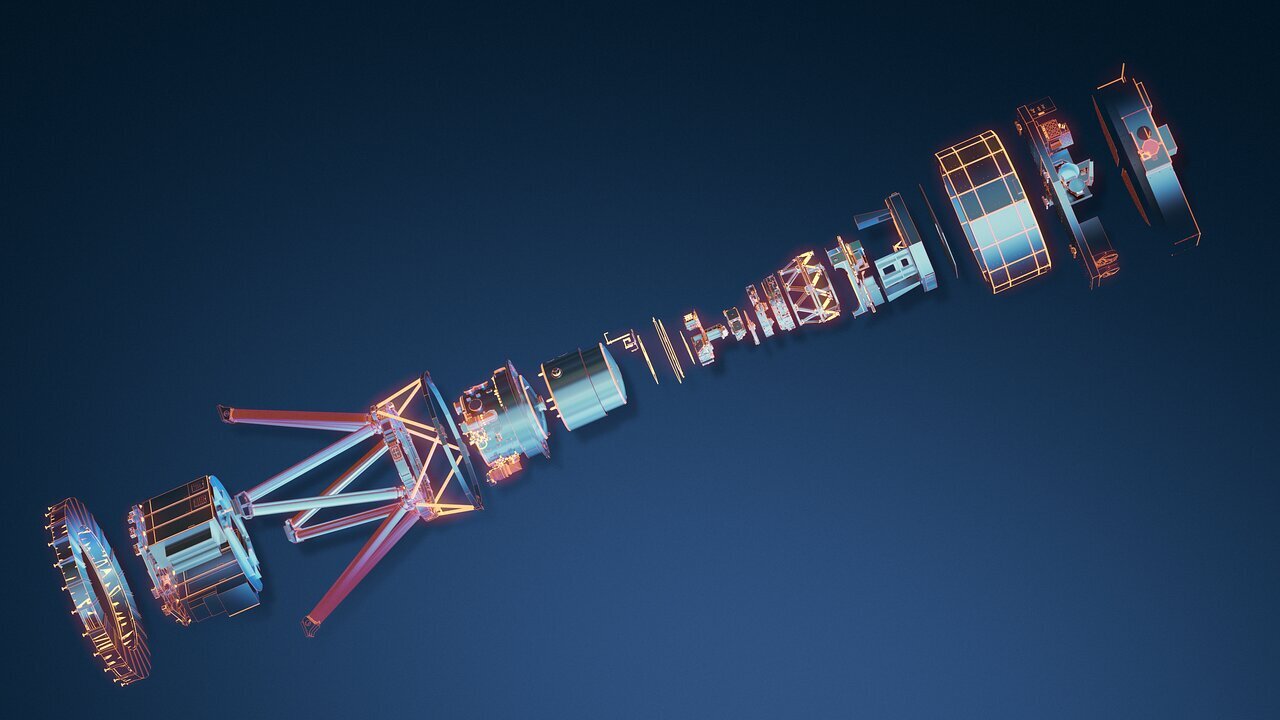17.09.2024

The Multi-AO Imaging Camera for Deep Observations (MICADO), the powerful high-resolution camera for ESO’s Extremely Large Telescope (ELT), has passed its final design review, marking an important milestone on its road to operation later this decade. Once complete, MICADO will offer astronomers the ability to take images of the Universe at an unprecedented depth.
The purpose of this last part of the multi-stage final design review (FDR) was to provide a wrap-up of the design process that has been going on for several years. While manufacturing usually begins only after the FDR is passed, the green light for manufacturing many of its components and sub-systems was already given previously, to enable the MICADO project to continue progressing towards ELT’s first light. To complete the design review, members of the consortium worked with ESO staff to clarify the remaining open issues about the instrument design. The passing of this milestone will enable the MICADO consortium – a team of 150 people spread across six countries – to now focus fully on manufacturing and testing the instrument.
The design of MICADO has been driven by a desire for ultra-high precision and stability to reach the required high sensitivity, resolution, astrometric accuracy and wide-wavelength coverage. To achieve this in the ELT environment, MICADO will be supported above the instrument platform so that the light from the telescope can be relayed both to the adaptive optics system that corrects the atmospheric blurring, and into the cryostat. Here the optics and detectors are kept cool so they can work effectively at near-infrared wavelengths without interference from other sources of heat. The detailed functioning of the instrument is controlled by electronics, much of which is mounted just underneath; and the software will allow the users to perform their observations remotely.
This sophisticated design will allow MICADO to obtain high-resolution images of the Universe that reveal the detailed structures and formation mechanisms of distant galaxies and allow astronomers to study individual stars and stellar systems in nearby galaxies as well as planets and planet formation outside our solar system. In addition, MICADO will act as a uniquely powerful tool for exploring environments where gravitational forces are extremely strong, such as close to the supermassive black hole at the centre of our galaxy, the Milky Way.
After a few years of early science, MICADO’s capabilities will be strengthened by linking it to the Multiconjugate adaptive Optics Relay For ELT Observations (MORFEO). This instrument will allow MICADO to take sharper images across a larger field of view.
For a full summary of who built MICADO, how it works, and how it will reveal the Universe as never seen before, watch ‘Meet MICADO, a super-camera for the ELT!’

The Multi-AO Imaging Camera for Deep Observations (MICADO) is the powerful high-resolution camera for ESO’s upcoming Extremely Large Telescope. The image shows an artist's 3D view of the various components of the MICADO instrument.
Credit:
ESO/MICADO consortium/L. Calçada
More Information
The MICADO consortium consists of MPE (Max-Planck-Institut für Extraterrestrische Physik, Germany), MPIA (Max-Planck-Institut für Astronomie, Germany), USM (Universitäts-Sternwarte München, Germany), IAG (Institute for Astrophysics of the Georg-August-Universität Göttingen, Germany), NOVA (Netherlands Research School for Astronomy represented by the University of Groningen, the University of Leiden, and the NOVA optical/infrared instrumentation group based at ASTRON in Dwingeloo, The Netherlands), INAF Istituto Nazionale di Astrofisica, CNRS/INSU (Centre National de la Recherche Scientifique/Institut National des Sciences de l’Univers represented by LESIA, GEPI, Division Technique de l'INSU, UTINAM/OSU THETA, LCF and IP2I/LMA, France), A* (an Austrian partnership represented by the University of Vienna, the University of Innsbruck, the University of Linz, and RICAM Linz, Austrian Academy of Sciences, Austria), and the Finnish Centre for Astronomy with ESO (FINCA), University of Turku, Finland.
Quelle: ESO
